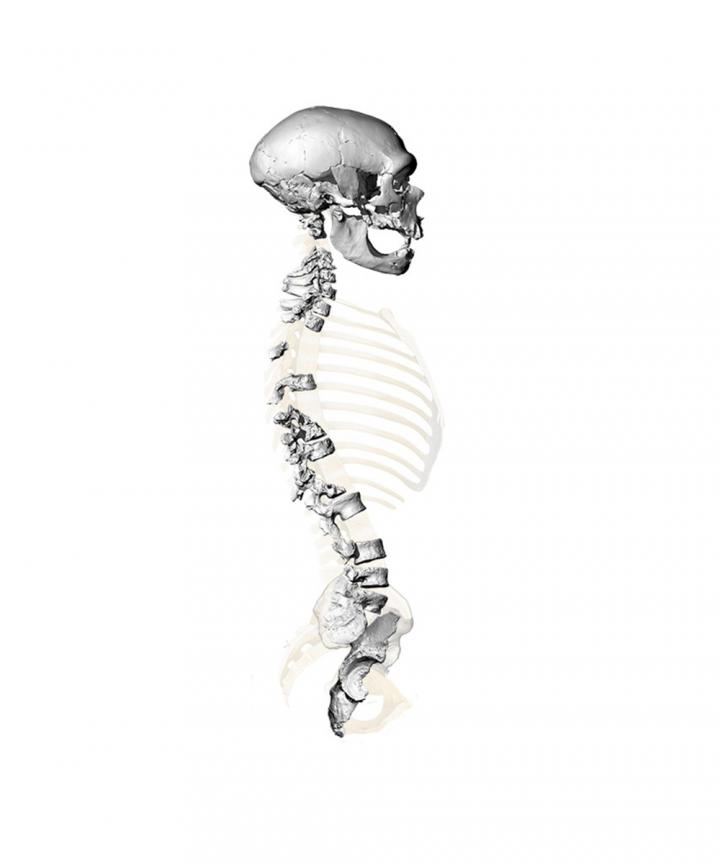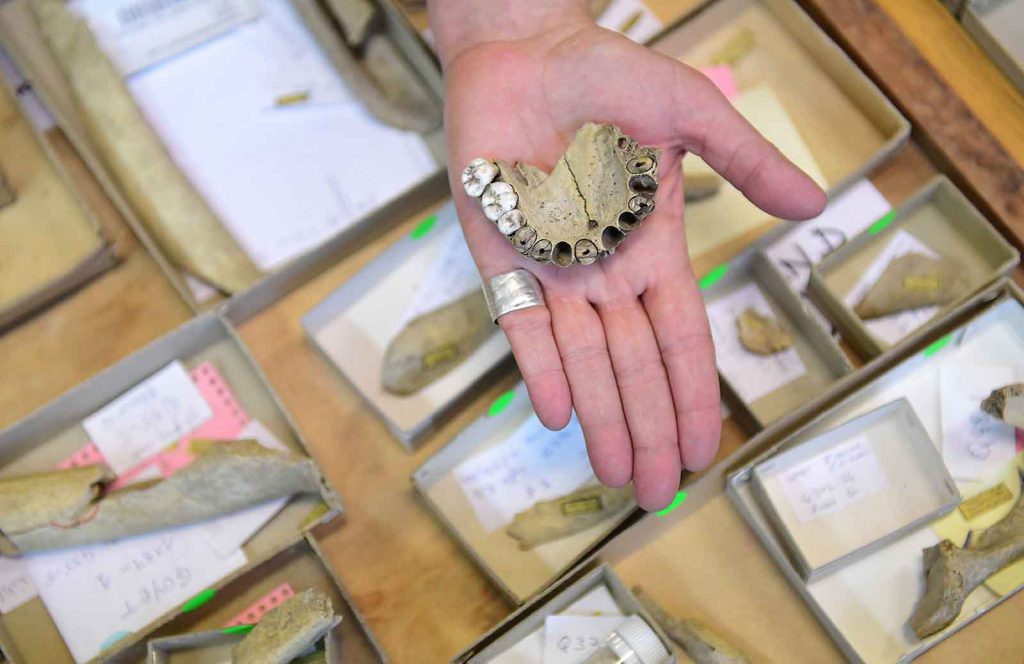The Neanderthal Diet—From Teeth to Guts
Please note that this article includes image(s) of human remains.
One of the more tenacious misconceptions about Neanderthals is that they were exclusively meat eaters.
Sure, in some of the colder regions of Europe plant food would have been very seasonally limited, so meat was almost certainly a large part of those locals’ diets. But in warmer, more resource-rich regions, their menu would have been more varied; they didn’t just gnaw on mammoth thighs. Neanderthals lived in all sorts of different ecosystems in Europe and the Levant during the more than 200,000 years that the species existed. There was no monolithic Neanderthal diet.
Today, evidence from the Neanderthal alimentary tract (the gastrointestinal system, from the mouth through to the anus) is helping researchers understand exactly what might have been on the menu hundreds of thousands of years ago.
Let’s start at the top end—the mouth. Tooth enamel is the most durable substance in the human body, and Neanderthal teeth have become a rich source of information. Much of this comes from dental calculus—not a bizarre form of tooth-based math, but rather hardened tooth plaque that can contain microscopic plant and microbial remains, and even trace DNA.
Researchers looking at the DNA in plaque from Neanderthal remains at the Spanish site of El Sidrón found evidence that they were eating mushrooms, pine nuts, and moss, with no indication of meat in their diet. Meanwhile, scrapings of Neanderthal dental plaque from Spy Cave in Belgium indicated a meat-heavy diet of wild mountain sheep and wooly rhinoceros. Some populations of Neanderthals were definitely more carnivorous than others.
Next in the evidence line is the torso. The Neanderthal bell-shaped ribcage is famously much wider than that of modern humans. Paleoanthropologist Miki Ben-Dor, of Tel Aviv University in Israel, has suggested that Neanderthals developed these large torsos over millennia to house livers and kidneys that had enlarged to cope with high levels of protein. We modern humans can only tolerate about 35 percent of lean protein in our diets before our kidneys start to suffer. If the Neanderthal diet contained more than this amount of lean, wild animal protein, they would have needed an internal physiology that could cope with the stress.
Interestingly, some traditional Arctic populations such as the Inuit, who sometimes subsist on an all-meat diet, have larger kidneys and correspondingly longer ribs than average Europeans—which seems to back up Ben-Dor’s theory.
As the saying goes, you are what you eat: Neanderthal food was processed into their bodies and bones. Today, evidence about diet can be squeezed from an isotopic analysis of those bones. This is a technique that tracks the relative abundance of differently weighted variants of chemical elements, like nitrogen or carbon, within skeletal remains. Factors like how a plant processes carbon dioxide, or how far up the food chain an animal is, affect the ratio of heavier to lighter elements in those foods, and so too in the eater’s bones—although it’s not always clear what these ratios mean.
Although many of these studies indicate that Neanderthals were primarily carnivorous, they actually seem to have been less so than more-modern Indigenous populations of humans in the Great Basin of the United States.
Finally, there is the evidence at the end of the digestive tract—or rather, the evidence that exits the digestive tract. Neanderthal coprolites, or fossilized feces, have been found in many archaeological sites, including El Salt, Spain. When archaeologist Ainara Sistiaga examined the fossilized poop found in abandoned hearths there, she discovered that some resulted from a meat-rich diet, others from someone eating a lot of plants. Incidentally, some of the coprolite samples at El Salt were host to a hearty population of nematodes, which might have made those individuals quite sick.
The El Salt coprolites, along with all the other evidence, suggest that Neanderthals—like modern humans—tended to eat whatever they could find in any given season. Depending on when and where they were living, that might have meant a diet of meat or plants—or often both.
This column is part of an ongoing series about the Neanderthal body: a head-to-toe tour. See our overview page.



































